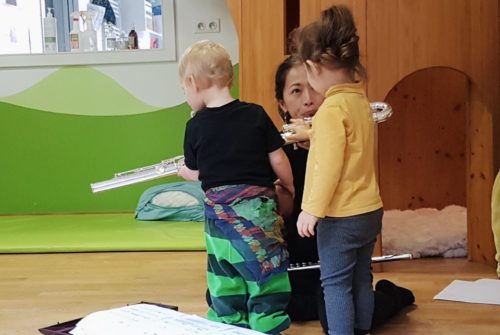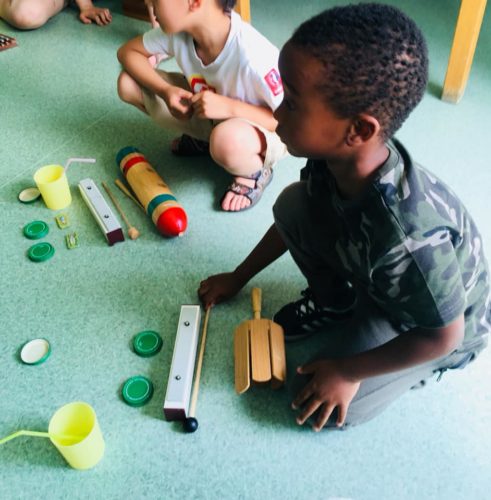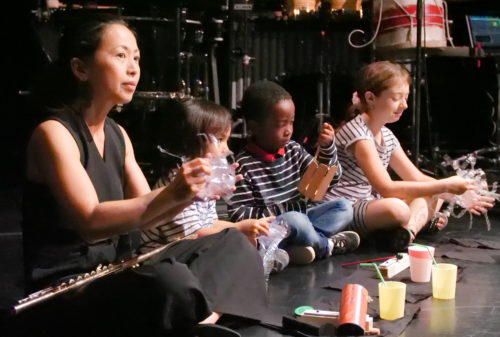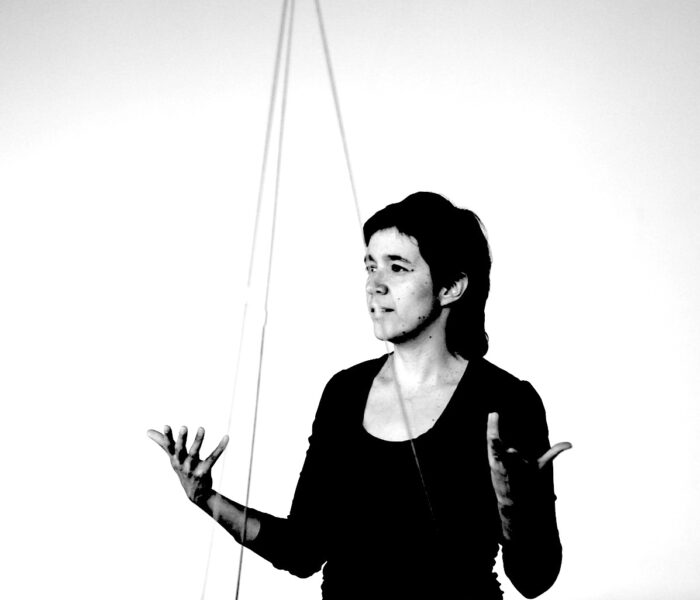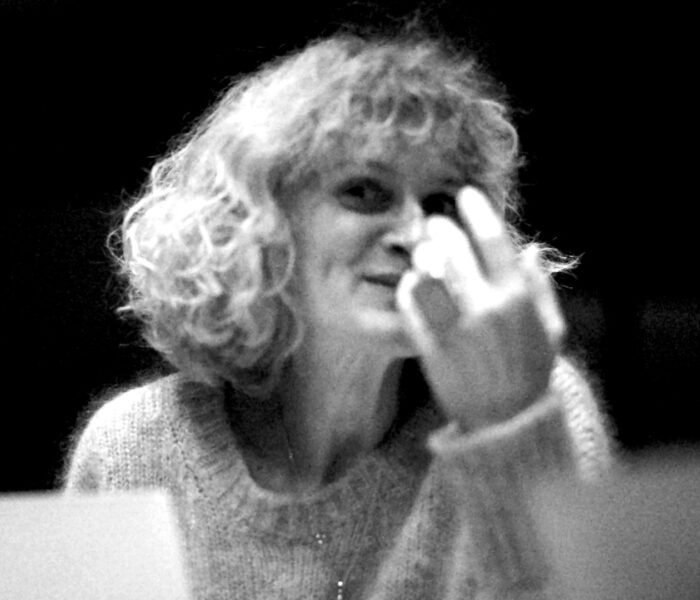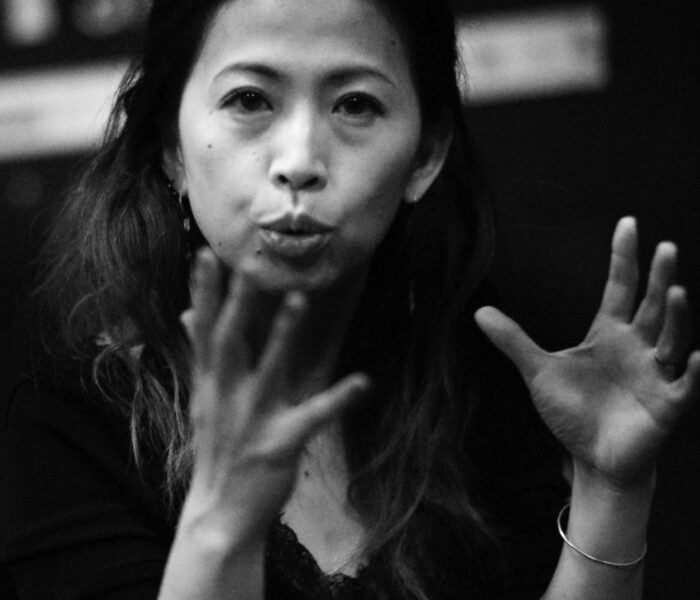Fondé par une flûtiste et un percussionniste, l’ensemble strasbourgeois HANATSUmiroir est spécialisé dans les musiques expérimentales et la recherche scénique. Mais ses musiciens interviennent aussi auprès des tout-petits, dans les crèches et les écoles maternelles. Des ateliers au nom tout trouvé : HANATSUmini ! Ayako Okubo, flûtiste de l’ensemble, nous raconte ces rendez-vous avec un public pas comme les autres.
Comment est né HANATSUmini ?
Quand on parle des musiques contemporaines, les gens songent tout de suite à des sons inhabituels : de drôles de bruits qui surprennent, qui heurtent l’oreille. Nous voulions initier les très jeunes oreilles à l’intérêt des sons qui nous entourent. Dès lors qu’un bruit est reproduit avec une intention, il devient son et donc, potentiellement, musique. Depuis cinq ans, nous travaillons aussi bien avec des tout-petits, de quelques mois à trois ans, des petits élèves de maternelle et des plus grands, en école primaire. C’est essentiel que les toutes jeunes oreilles – bébés, bambins – soient initiés à des langages musicaux variés, qu’ils aient une ouverture à toutes sortes de sons, afin qu’ils ne considèrent pas les musiques expérimentales comme du son désagréable, quelque chose à considérer avec méfiance! Nous voulons permettre à ces enfants de se créer un bagage acoustique et sonore. La curiosité, cela s’apprend.
Comment se passe les ateliers ?
Nos interventions sont nécessairement courtes : une demi-heure pour les tout-petits, pas plus, une heure en primaire. On ne joue pas aux petits le répertoire expérimental de l’ensemble : il ne s’agit en aucun cas de proposer une version de nos concerts auprès des enfants ! Nous venons avec une valise pleine d’objets naturels : des noix, des cailloux, des grains de riz, pour provoquer des stimuli sensoriels. Puis nous sortons les vrais instruments : des sifflets oiseau, puis ma flûte traversière. Je fais la démonstration de différents souffles, des sons différents, une petite mélodie élaborée, atonale… Il m’arrive de reprendre des petites mélodies enfantines, mais pas de la manière habituelle et attendue. Je peux aussi juste appuyer sur les clés de ma flûte, pour faire deviner une mélodie connue, mais avec des timbres différents. Car nous travaillons avant tout sur la recherche de timbres pendant nos ateliers de fabrication de sons. Nous sommes trois musiciennes d’HANATSUmiroir à nous occuper de HANATSUmini : Rajani Turlesky, musicienne intervenante en milieu scolaire, Noëllie Poulain, danseuse, et moi-même. L’oreille et le mouvement sont très liés dans nos ateliers.
Comment les enfants réagissent-ils ?
Quand j’interviens dans des classes de CM1, CM2, les enfants rient quand je produis des sons étranges avec ma flûte. C’est drôle : ils ne sont pas très grands, mais leurs oreilles sont déjà formatées. Les plus jeunes ont une oreille neuve, sans a priori, sans codes. Ils accueillent tous les sons. Cela montre l’importance de les sensibiliser très tôt à des univers sonores qui sortent des sentiers battus, ne serait-ce qu’à l’attention portés à tous les sons qui les entourent.
Comment avez-vous poursuivi votre mission auprès des enfants pendant la crise sanitaire ?
Avec l’arrêt de toutes nos activités, nous avons continué à proposer des chasses aux sons, sur Facebook et Youtube. Dans nos vidéos, nous avons invité les familles à créer, chez elles, des petits ateliers d’éveil musical. L’idée est d’éveiller les jeunes enfants aux bruits qui rythment leur quotidien, dont l’agencement peut facilement se métamorphoser en une petite musique. L’exercice permet de titiller leur créativité, mais aussi d’introduire l’idée d’une musique présente partout, et pas seulement sur une scène de concert ou dans des enceintes. Le travail d’éveil musical d’HANATSUmiroir est de faire comprendre aux petits que tout bruit, à partir du moment où il est émis avec une intention et agencé avec d’autres bruits, se transforme en composition musicale.
En plus des ateliers HANATSUmini, vous organisez volontiers des concerts commentés pour les familles…
Oui, des séances familiales sont organisées en parallèle de nos concerts afin d’accueillir des enfants et familles, de la crèche à l’école primaire. Nous avons également créé la Vallée des merveilles à la Biennale de Venise en 2018 : un spectacle jeune public sur les légendes de la vallée de la Roya, dans les Alpes, écrit par Maurilio Cacciatore. Nous préparons, pour la fin de la saison, Alice, un conte du compositeur allemand Ole Hübner. Grâce à nos interventions dans les crèches, les écoles, mais aussi grâce à cette formule de petit spectacle participatif, les jeunes oreilles apprennent rapidement à s’ouvrir : on peut bientôt, naturellement, leur proposer des pièces contemporaines.
Propos recueillis par Suzanne Gervais



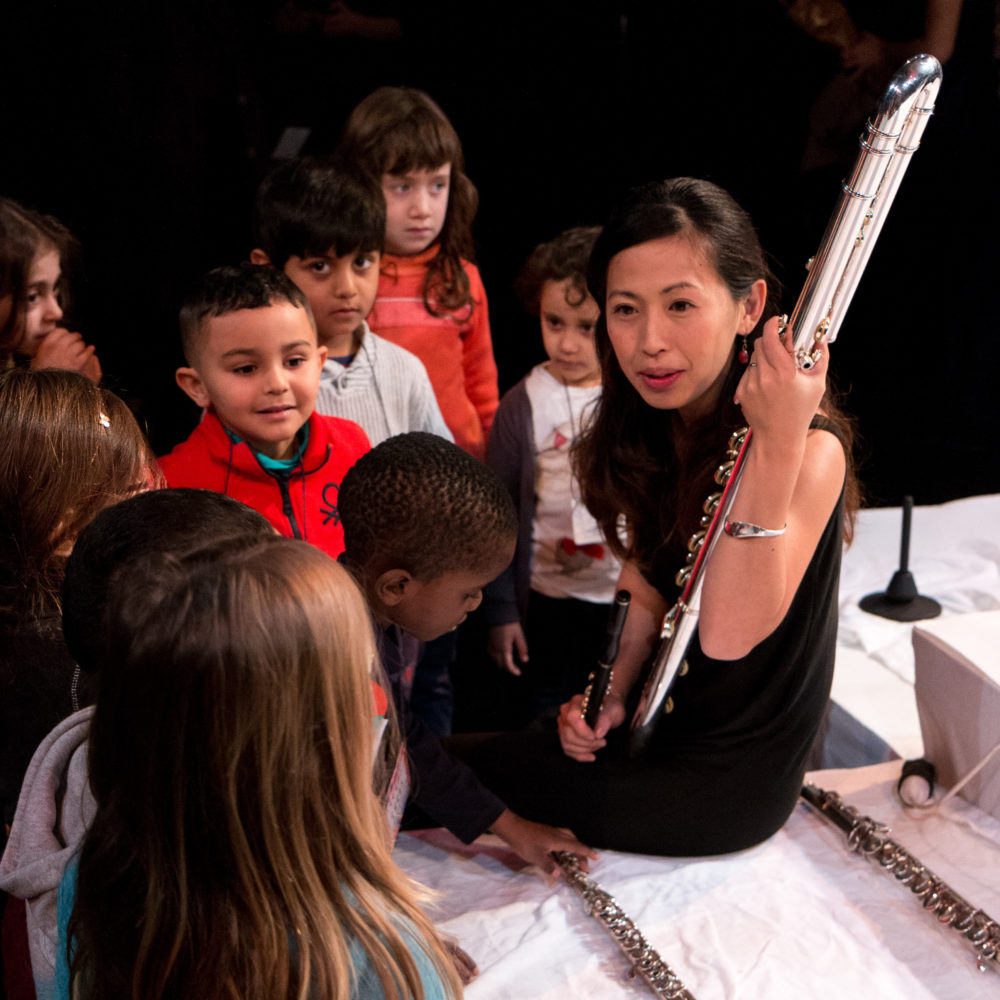)
